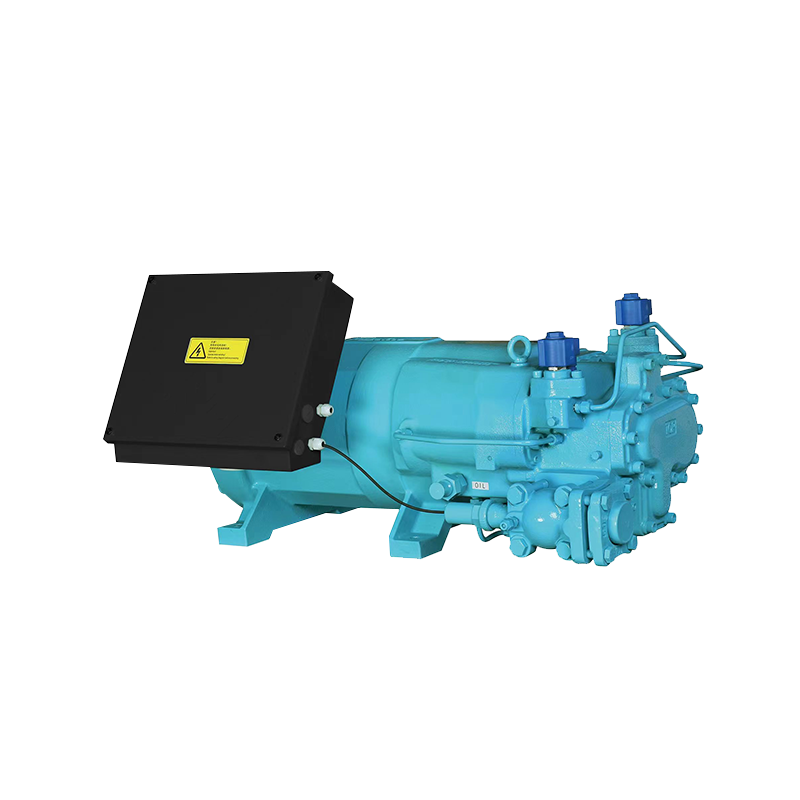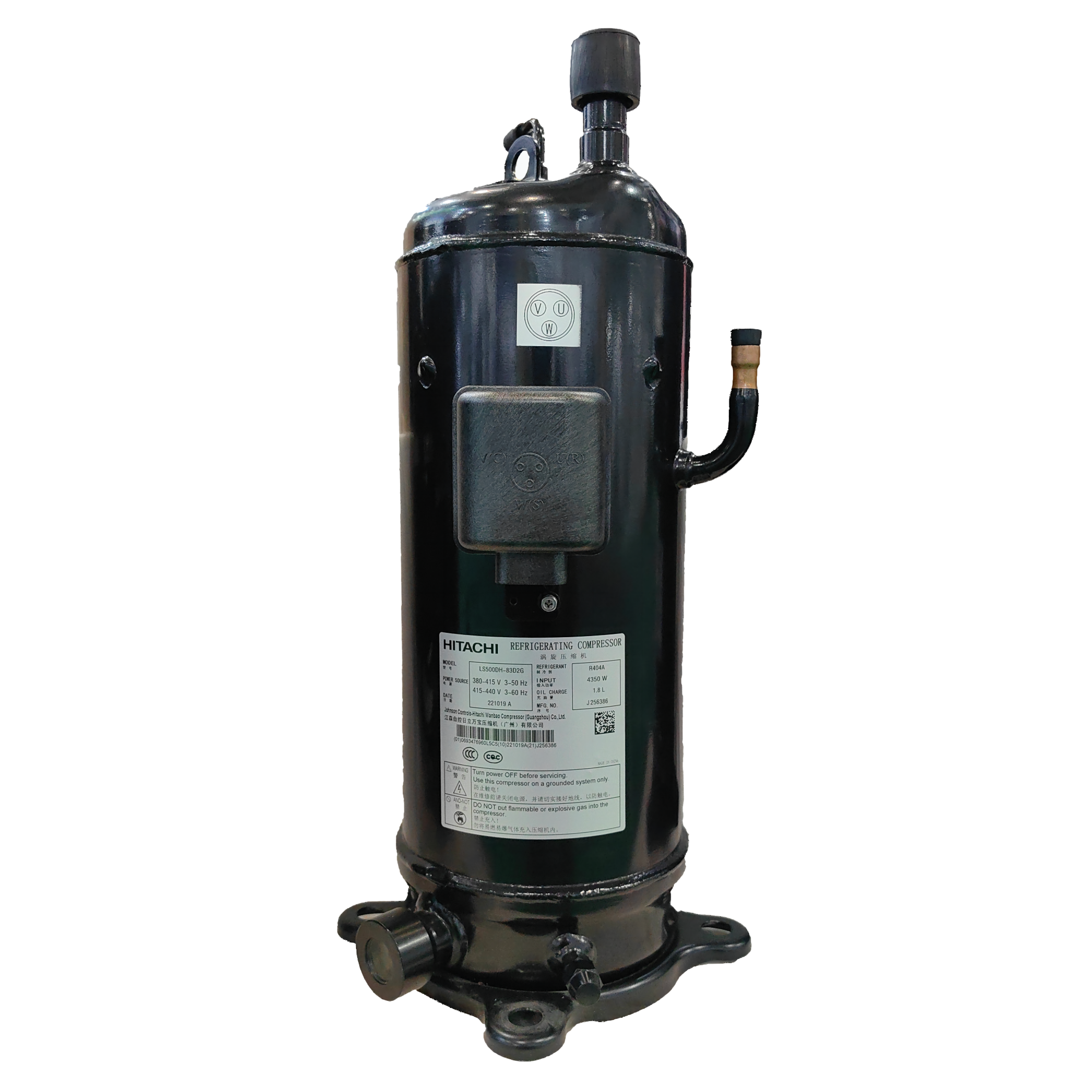High-speed rotary compressors have a wide range of applications, primarily covering the following areas:
Household air conditioners: Rotary compressors were initially used primarily in home air conditioners. Due to their simple structure, compact size, and high efficiency, they have become one of the core components of home air conditioners.
Light commercial air conditioners and refrigeration equipment: With technological advancements, rotary compressors are widely used in light commercial refrigeration equipment, such as light commercial air conditioners, light commercial cabinets, and small cold storage. Particularly in the refrigeration and freezing sectors, their market share has been growing year by year due to their significant energy savings and price advantages.
Heat pumps and heat pump drying: Rotary compressors are also widely used in household heat pumps and heat pump drying. With policy support and improved industry standards, their application prospects are broad.
Parking air conditioners and new energy vehicles: With the development of new energy vehicles, rotary compressors are also used in parking air conditioners and electric vehicle air conditioning systems. Market demand is growing rapidly, especially in electric heavy-duty trucks and light commercial vehicles.
Base Station Air Conditioners and Communications Equipment: With the accelerated construction of 5G networks, the demand for compressors in base station air conditioners and related supporting facilities is increasing, creating new market opportunities for rotary compressors.
Industrial Refrigeration and Cold Chain Transportation: Rotary compressors have broad application prospects in industrial refrigeration, refrigerated trucks, cold chain transportation, and other fields due to their energy-saving and high-efficiency characteristics.
Environmental Protection and New Energy: Rotary compressors also have considerable application potential in the environmental protection industry and new energy vehicle charging stations.
High-speed rotary compressors, with their simple structure, high efficiency, and compact size, are diversifying beyond the traditional residential air conditioning market and expanding into more emerging fields.
What are the maintenance and reliability of high-speed rotary compressors?
The maintenance and reliability of high-speed rotary compressors are key to ensuring their long-term stable operation and efficient performance. The following is a detailed analysis of the maintenance and reliability of high-speed rotary compressors:
1. The Importance of Maintenance
Maintenance is key to ensuring the long-term stable operation of compressors. Regular maintenance can extend the life of equipment, reduce failure rates, and lower operating costs. For example, regular inspection and replacement of wearing parts (such as filter elements, oil filters, and seals) can effectively prevent failures.
2. Preventive Maintenance Plan
Developing and implementing a detailed preventive maintenance plan is key to improving compressor reliability. The maintenance plan should be customized based on the equipment's operating conditions, frequency of use, and environmental factors. For example, it should include regular inspection and replacement of lubricating oil, cleaning of coolers, and inspection of rotor and bearing wear.
3. Maintenance Content
Daily Inspection: This includes checking for abnormal noise, oil color changes, leaks, abnormal vibration, and temperature fluctuations.
Regular Maintenance: This includes replacing wearing parts, inspecting rotor and bearing wear, and checking the lubrication system.
Professional Maintenance: This includes in-depth maintenance performed by professionals, such as replacing key components, calibration, and commissioning.
4. Reliability Analysis
Reliability Analysis: This involves evaluating the reliability, availability, and maintainability (RAM) of equipment through reliability engineering (RAM) analysis to optimize equipment performance and reduce failure rates.
Failure Mode Analysis: This involves analyzing failure modes to identify critical failure points and develop preventive measures to improve equipment reliability.
5. The Relationship between Maintenance and Reliability
Maintenance and Reliability: A sound maintenance strategy can significantly improve equipment reliability, reduce failure rates, and extend equipment life.
Maintenance and Cost: Regular maintenance can reduce repair costs, minimize downtime, and improve production efficiency.
6. Maintenance Precautions
Safe Operation: Maintenance work should be performed after power is turned off and the equipment has cooled down to avoid accidents caused by improper operation.
Professional Operation: Maintenance work should be performed by trained professionals to ensure safety and effectiveness.
7. Maintenance Records and Management
Maintenance Records: Record the time, content, and results of maintenance work to facilitate tracking of equipment status and maintenance history.
Maintenance Plan Management: Adjust the maintenance plan based on the equipment's operating status and maintenance records to ensure that the equipment is always in optimal condition.
Maintenance and reliability of high-speed rotor compressors are critical to ensuring their long-term stable operation and efficient performance. By developing and implementing a detailed maintenance plan and conducting regular inspections and maintenance, you can effectively improve equipment reliability, extend its lifespan, and reduce operating costs.

 English
English Español
Español عربى
عربى русский
русский











